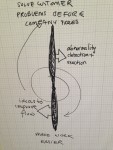The kaizen engine in the lean machine
Lean is a clever scaffolding that points people towards continuous improvement and, if they work together, superior performance. But how does performance improvement really work? At individual level?
The traditional operational excellence view of improvement is to avoid mistakes. Most companies are really big bureaucracies who’s way to deal with problems is to add another layer of standards, procedures, audits, checks, middle-managers to control people and so on. From a lean point of view, some of this is necessary, but a lot of it is waste.
Wait a minute – how can error avoidance be waste? Isn’t that the point of zero defects? The problem with error avoidance on its own is that it also leads to mindlessness, and even larger mistakes. People are not machines. In order to be mindful about their work, they need some degree of playfulness, some space to think. Sure, mistake avoidance is important, but so are:
- Clear goals, particularly putting customer satisfaction ahead of the company’s interests or habits
- New ideas, and hopefully, new improvement ideas – the lean trick is to ask oneself how to improve the flow of work and the flow of working.

The improvement engine at the heart of lean is kaizen – imagine two forces that drive this engine:
- abnormality detection and reaction
- flow improvement ideas and suggestions
If targeted towards:
- Better satisfying customers
- Making work easier
This engine creates the dynamic power that leads to superior performance as every employee gets a chance to engage more fully with their work, work more mindfully, and enjoy the flash of insights that lead to doing things differently and the joy of creation.









